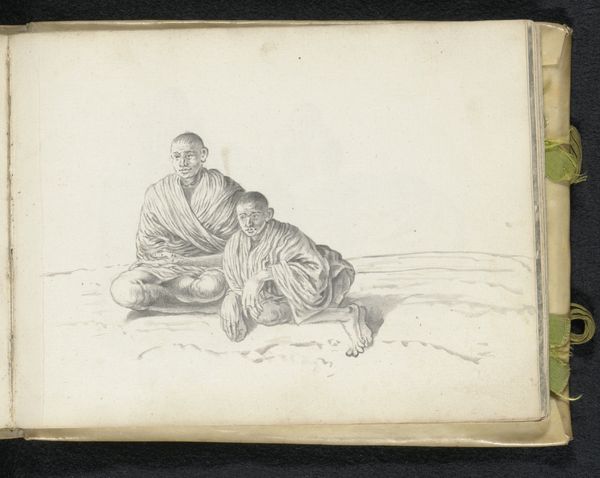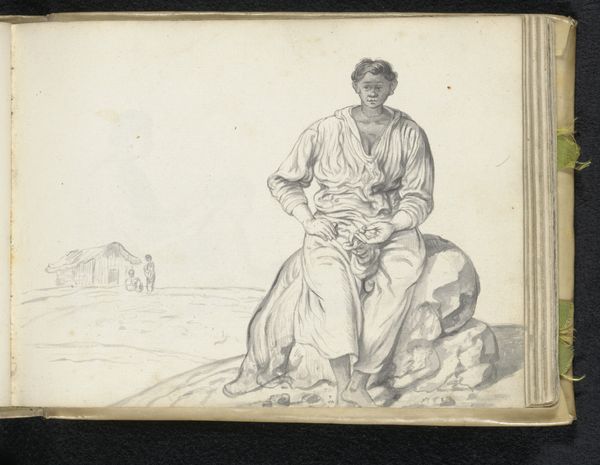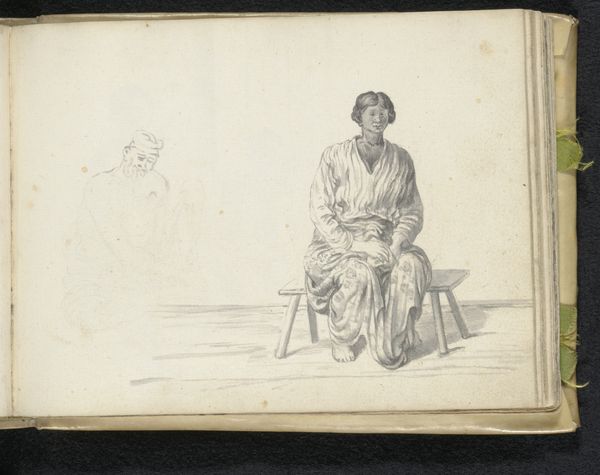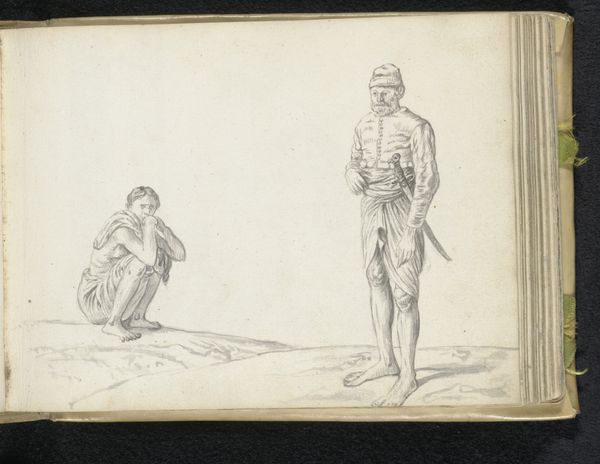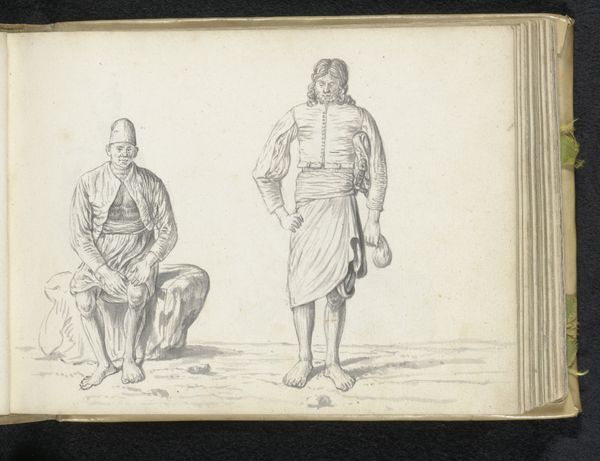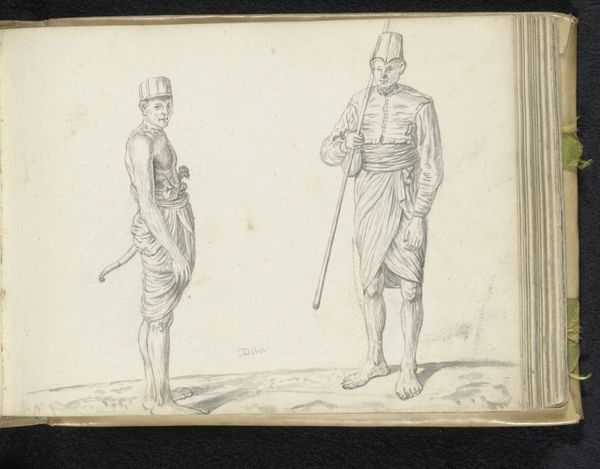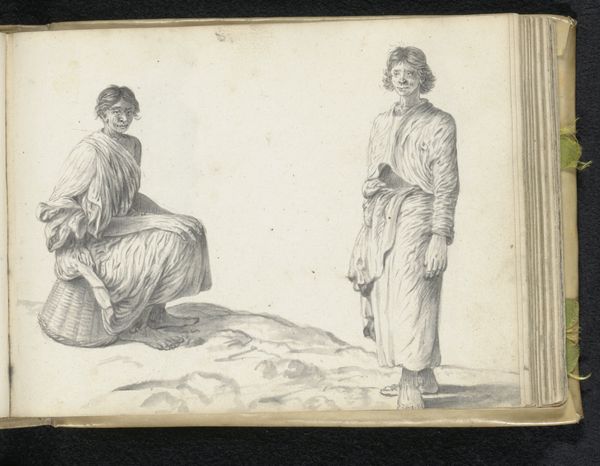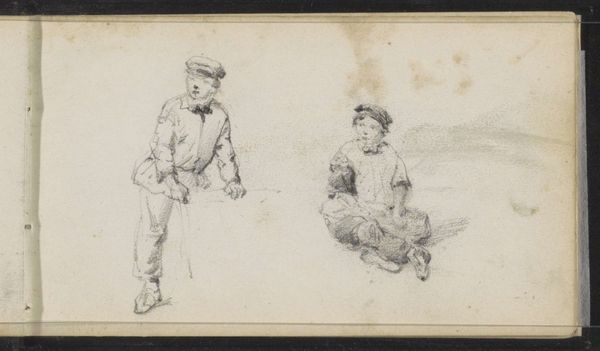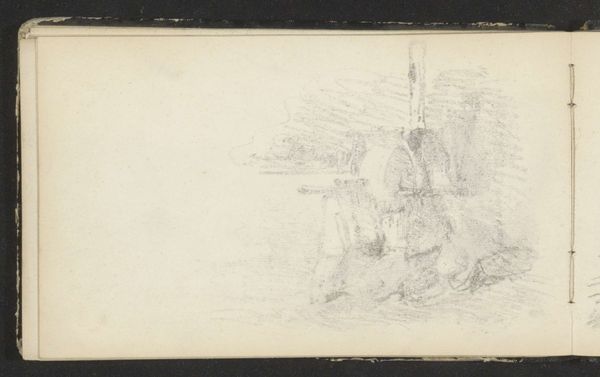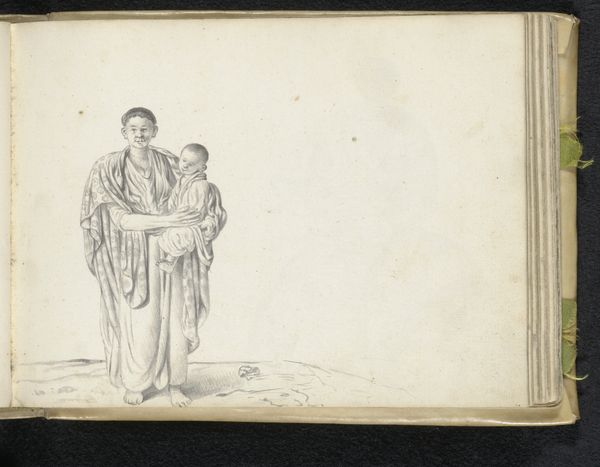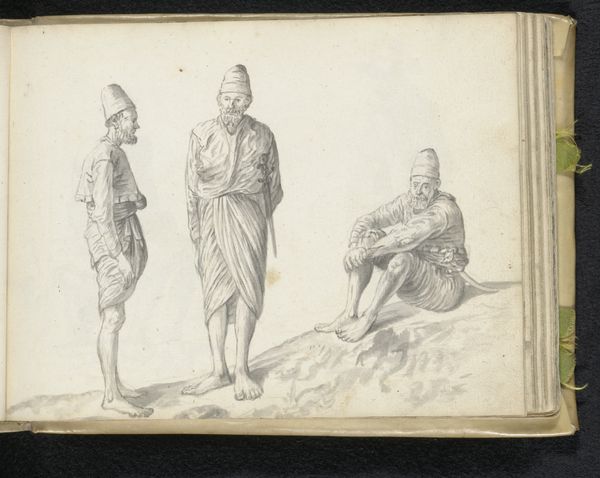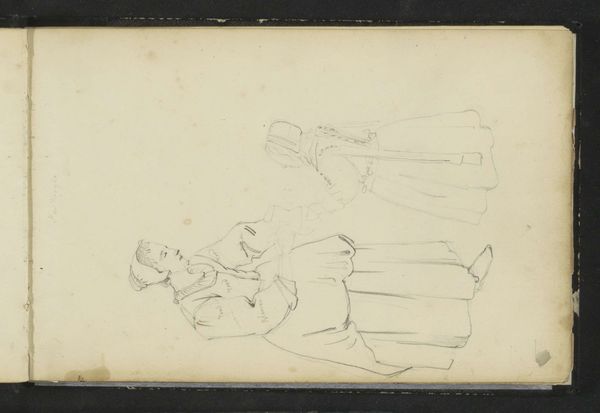
drawing, paper, pencil
#
portrait
#
drawing
#
aged paper
#
toned paper
#
quirky sketch
#
dutch-golden-age
#
sketch book
#
figuration
#
paper
#
personal sketchbook
#
sketchwork
#
pen-ink sketch
#
pencil
#
sketchbook drawing
#
genre-painting
#
storyboard and sketchbook work
#
sketchbook art
#
realism
Dimensions: height 148 mm, width 196 mm
Copyright: Rijks Museum: Open Domain
Curator: This pencil and ink sketch on paper is titled "Two Sinhalese Soldiers," created in 1662 by Esaias Boursse. What's your initial take? Editor: Stark. It feels immediate and a little haunting, perhaps due to the stark contrast and the paper’s age. The figures seem to be waiting, posed. Curator: Indeed. Boursse, a Dutch Golden Age artist, likely made this drawing in situ during his travels. Think about the materiality here. It's a readily transportable sketchbook drawing. He wasn't creating a finished history painting; instead he created a record—of labor, power and observation on Dutch Colonial activity. Editor: Right. The swords each man carries certainly signal power and readiness. But to me they appear weary or resigned. Note how the artist used tonal shifts to convey skin color, attire and swords as symbolic carriers of identity. It communicates far beyond the mere ethnographic documentation. Curator: It's interesting to consider what Boursse's access was. These figures seem, based on dress and accoutrements, positioned somewhere within the military structures enacted in then colonial Ceylon. Did they sit for him willingly? Were they conscripted labor? These factors change how we understand the finished work and its legacy. Editor: A valid point. How does the setting affect its reading? They are placed upon what seems like a dock, possibly overseeing laborers; such symbolic domination seems implied. I find it really fascinating to think of it now as we see the image—it takes on an afterlife it could not have initially held. Curator: Absolutely. That sketch-like quality allows the cultural nuances to rise to the fore, forcing a reflection upon what labour and resources were required in creating the physical items each man wears or uses. The means of production, consumption, and display all intersect in this work. Editor: By observing how an artist of that time represented cultural markers—those swords, for example—we gain invaluable insights into societal values and the psychological implications of cultural exchange. I am very drawn to their composure and clothing. Curator: Ultimately, the work presents to modern eyes many avenues to reflect critically. Boursse provides us not just an image, but evidence. Editor: Yes, that tension between observed 'reality' and symbolic presentation makes this humble sketchbook image remarkably resonant.
Comments
No comments
Be the first to comment and join the conversation on the ultimate creative platform.
